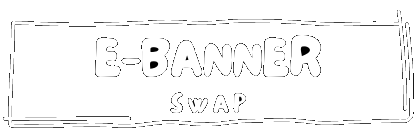An invention idea is the first spark, the initial creative thought that can potentially transform into a tangible, valuable product or process. It’s where innovation starts, encompassing anything from a novel device, method, composition, or process that has not yet been brought into existence. These ideas are the seeds from which new, groundbreaking technologies and improvements can grow, often solving problems or addressing needs in ways that have never been considered before. However, having a groundbreaking idea is just the beginning. Transforming that idea into reality is a complex, challenging journey that requires resources, knowledge, and a supportive network. This is where InventHelp steps into the picture, providing crucial support to inventors at every step of their journey. Let’s see how does InventHelp assist inventors when inventing a new invention idea?
The Creative Process and InventHelp’s Support
The journey from concept to creation is anything but linear. It’s a multifaceted creative process that involves refining the initial idea, conducting thorough research on its feasibility, developing prototypes, and navigating the thoroughfares of patenting, not to mention the daunting task of marketing the final product. One of the key challenges many inventors face is not just having an innovative idea, but possessing the means and knowledge to bring it to life.
Here, InventHelp plays a pivotal role. Since its inception, InventHelp has been dedicated to helping inventors get their ideas off the ground by providing services that facilitate the innovation process. From helping inventors patent their ideas to assisting in marketing them to interested manufacturers, InventHelp serves as a bridge between raw creativity and commercial success. Their expertise in the field of inventions makes them an invaluable resource for anyone looking to navigate the complex web of challenges they are bound to face on the path to bringing an invention to market.

The Importance of Documenting and Refining Ideas
A crucial step in the innovation process that InventHelp emphasizes is the importance of documenting and refining one’s invention idea. Documenting the idea in a thorough, understandable manner is essential not only for the purpose of patenting but also as a means of refining the concept itself. Writing down the idea forces the inventor to think critically about their invention, its purpose, and its potential impact, allowing for the identification and resolution of possible flaws or improvements early on in the process.
InventHelp encourages inventors to keep a meticulous record of their invention process, advising on the proper ways to document their journey in a manner that is legally sound and beneficial for the patenting process. This includes keeping a detailed inventor’s notebook that chronologically records every step taken during the development of the invention, from the initial idea to adjustments made during the prototyping phase. A prototype model helps to test the design of your invention idea — InventHelp helps you with the design and development of your prototype model, as well as the creation of a working prototype.
Moreover, InventHelp understands that refining an invention idea is a continuous process that doesn’t end with the first or even the fifth iteration of a prototype. They provide inventors with feedback and resources that can help them tweak and improve their inventions, ensuring that the final product is as innovative, efficient, and marketable as possible.
In Conclusion
Invention ideas are the backbone of innovation, but transforming these ideas into real-world inventions demands a level of commitment, knowledge, and support that is often overwhelming for many inventors. InventHelp exists to ease this burden, providing inventors with the guidance, tools, and services needed to navigate the challenging path from concept to commercialization. By emphasizing the importance of documenting and refining ideas, InventHelp ensures that inventors are well-equipped to turn their creative visions into tangible, successful realities.


